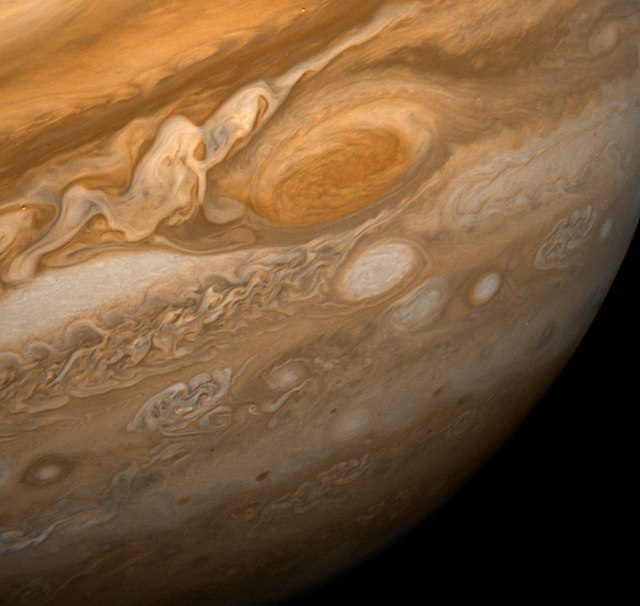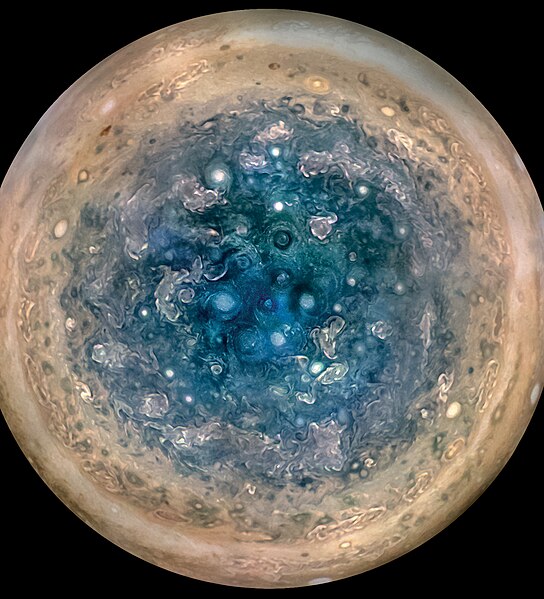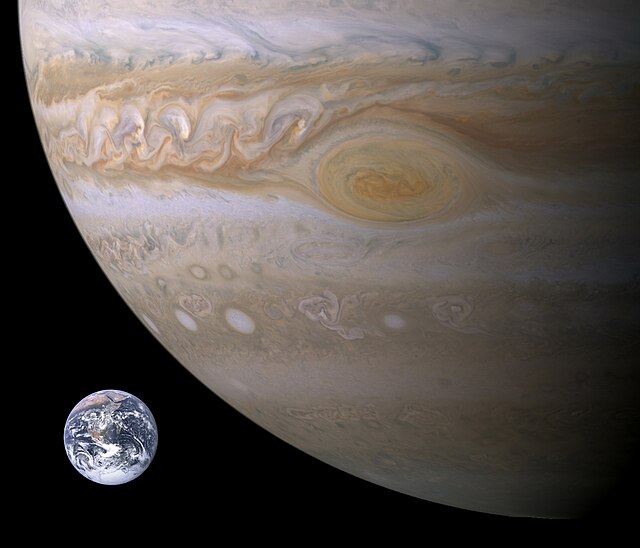An extraterrestrial vortex is a vortex that occurs on planets and natural satellites other than Earth that have sufficient atmospheres. Most observed extraterrestrial vortices have been seen in large cyclones, or anticyclones. However, occasional dust storms have been known to produce vortices on Mars and Titan. Various spacecraft missions have recorded evidence of past and present extraterrestrial vortices. The largest extraterrestrial vortices are found on the gas giants, Jupiter and Saturn; and the ice giants, Uranus and Neptune.
Two 2001 images from the Mars Orbiter Camera on NASA's Mars Global Surveyor before and during a global dust storm
Cyclone on Mars, imaged by the Hubble Space Telescope
Great Red Spot, with Oval BA to the south
Jupiter's South Polar Vortices, imaged by NASA's Juno Spacecraft
The Great Red Spot is a persistent high-pressure region in the atmosphere of Jupiter, producing an anticyclonic storm that is the largest in the Solar System. It is the most recognizable feature on Jupiter, owing to its red-orange color whose origin is still unknown. Located 22 degrees south of Jupiter's equator, it produces wind-speeds up to 432 km/h (268 mph). Observations from 1665 to 1713 are believed to be of the same storm; if this is correct, it has existed for at least 359 years. It was next observed in September 1831, with 60 recorded observations between then and 1878, when continuous observations began.
Donato Creti's 1711 painting "Jupiter", the first depiction of the Great Red Spot as red
A wide view of Jupiter and the Great Red Spot as seen from Voyager 1 in 1979.
Size of the Earth compared to the Great Red Spot
Winds in the Great Red Spot as analyzed from Hubble's data. Red means faster wind, blue means slower wind.







